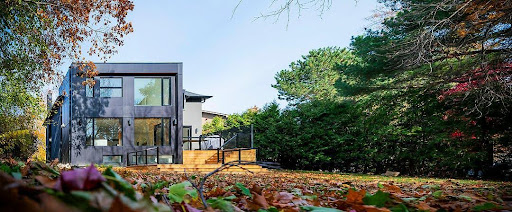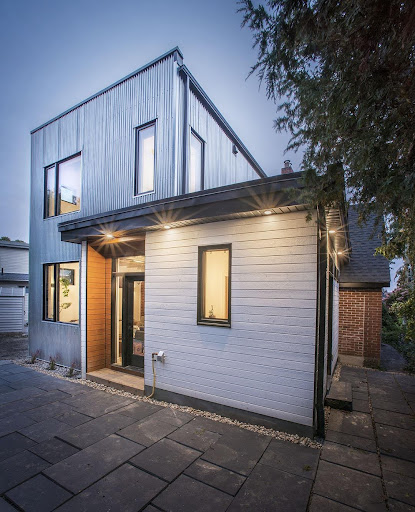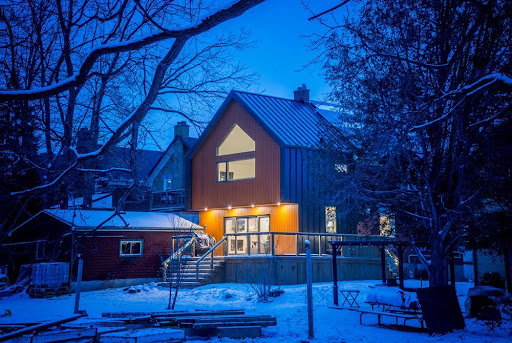You’re planning to do an addition, there are many options and decisions to consider, one of the most important is what type of foundation is your addition going to sit on? Generally, there are four options for addition foundations poured concrete with excavated living space or crawl space, ICF with excavated living space or crawl space, helical piers, and slab on grade with frost walls.
Which one is best for your project? That depends on a few factors we’ll break down. To get to the answer, you need to ask yourself three questions
- Do you care if your yard gets dug up?
- Do you need the additional living or storage space a full height basement under your addition would allow?
- Is cost the of the foundation a big factor in your decision?
If your answer to question 1 is yes, then a helical pier foundation is the best option, leaving your yard in pristine condition versus the excavation, excavated material stockpiling, concrete, backfilling and heavy equipment traffic your yard will see with the other types of foundations. Of course, mitigation can and should be implemented but will not fully eliminate the impact.
For a no answer to question 1, any of the concrete options are possible.
For question 2 if your answer is no, then you should consider a helical pier foundation or a slab on grade with frost walls. Both are more cost effective and are completed faster than a full height or crawlspace poured foundation.
If you answered yes to question 2 you have to decide if you want your basement area to be high performing or simply meet requirements. If you want a super high performing basement that you’re going to spend a lot of time in, then an ICF foundation may be right for your addition. If you’re comfortable with meeting requirements, then a poured concrete foundation that’s insulated from the inside only is the way to go.
Question 3 answer is yes? Then helical piers are the answer, they’re most cost effective, require the least amount of time, equipment and labour input. Often, the helical piers can go in in the morning and framing can start in the afternoon. Contrary to a full height poured foundation that requires excavation, footings to be formed, poured and stripped, walls to be formed and poured and stripped, weeping tile and stone installed, waterproofing installed, and finally backfilled, then framing can start, you get the point. Helical piers also reduce the requirement for expense to put your yard back together after the construction which should be factored into the calculation.
Full Height Poured Concrete
This is what you would consider a typical foundation, excavated to a depth required to get your height for the basement with footings and poured concrete walls. The interior of the walls are insulated to create living space underneath the addition, with a floor slab being poured. This will also require cutting through the existing foundation to create a door entrance or a fully open concept connecting the rest of the basement while supporting the existing walls above.

Crawlspace Poured Concrete
This is a good option if you want to save cost, don’t need the extra basement square footage and want a more traditional construction approach instead of helical piers. The crawlspace can be heated and insulated, creating a warm conditioned space under the addition floor that helps keep things warm and efficient.
Slab On Grade
A slab on grade with frost wall foundation may be right for you if you’re planning to run hydronic in-floor heating in the slab. Even though the slab and frost walls must be insulated, we can’t change the fact that heat rises, meaning, if the slab isn’t heated, it’s going to feel cooler than the air in the addition.
ICF
If you’re considering poured concrete of any kind, ICF can be a great option. What’s ICF? It’s the foam Lego blocks that lock together and the concrete is poured in the middle. ICF foundations are insulated on both the interior and the exterior with the concrete in the middle. This means that the concrete becomes an insulated thermal mass which is extremely effective at regulating temperature. If you want the ultimate comfort for a full height basement under your addition, ICF should be a top consideration.

Helical Piers
Helical piers are an excellent option if you want to limit the impact on your yard, save cost and compress the construction schedule. Helical piers are installed by a small tractor with tires that don’t tear up your yard, they are always far less expensive than the total process of any type of poured concrete foundation and they are usually installed in one day.
What are helical piers? They’re effectively large screws that are drilled into the ground until they reach a specified torque required to bear the structure that will sit on them. One pier can be installed in minutes by two people.

Which Foundation Is Best?
Ultimately, the decision is up to you, your design team, and builder. Each option has it’s merits in the right situation, if you follow our three step decision process, you’re sure to arrive at the correct answer for you.
Regardless of the type that’s best for you, we have extensive experience with each and have completed many successful addition projects. We’d be more than happy to discuss your project and work with you to deliver the best addition for you and your family.

